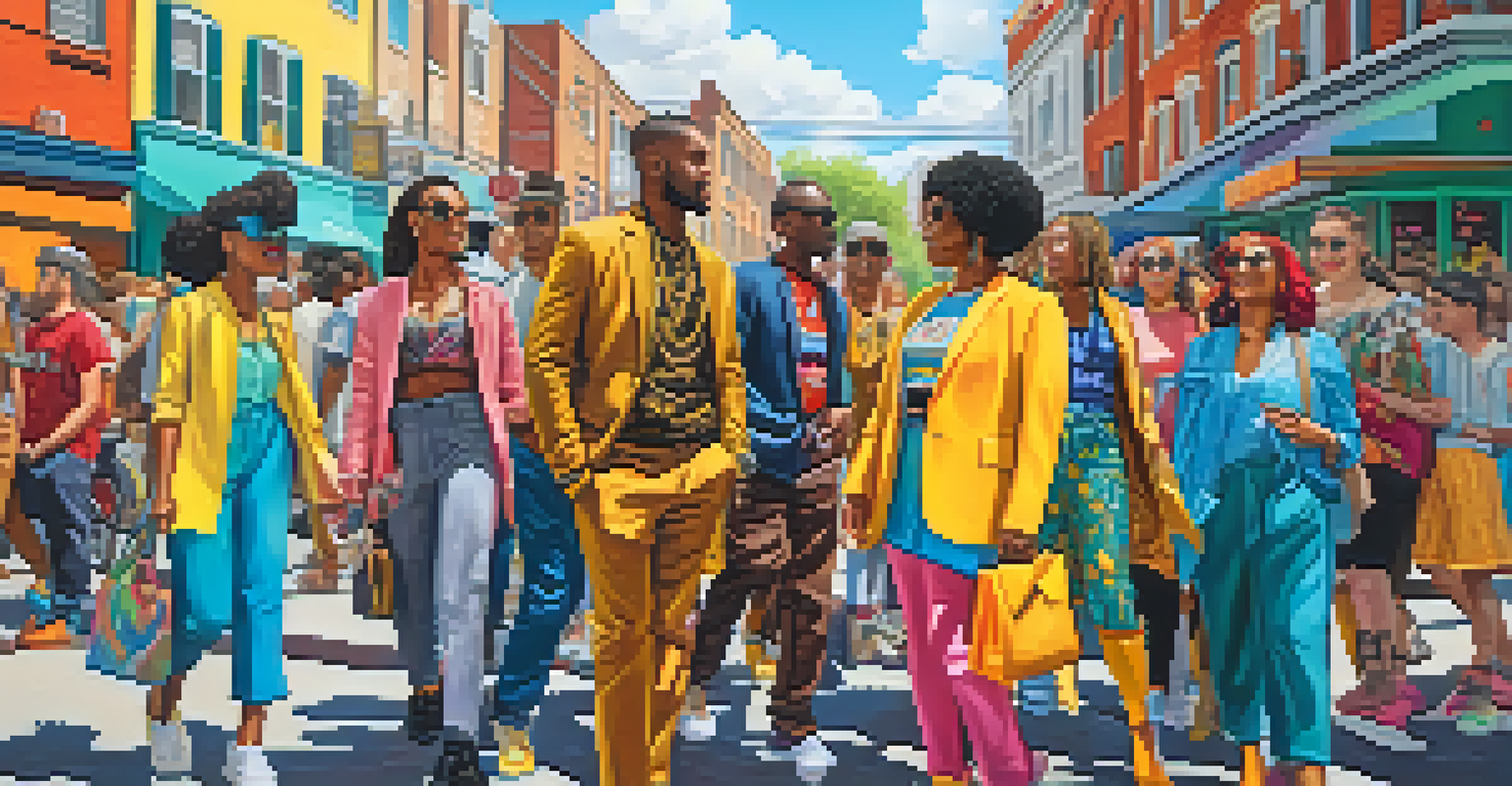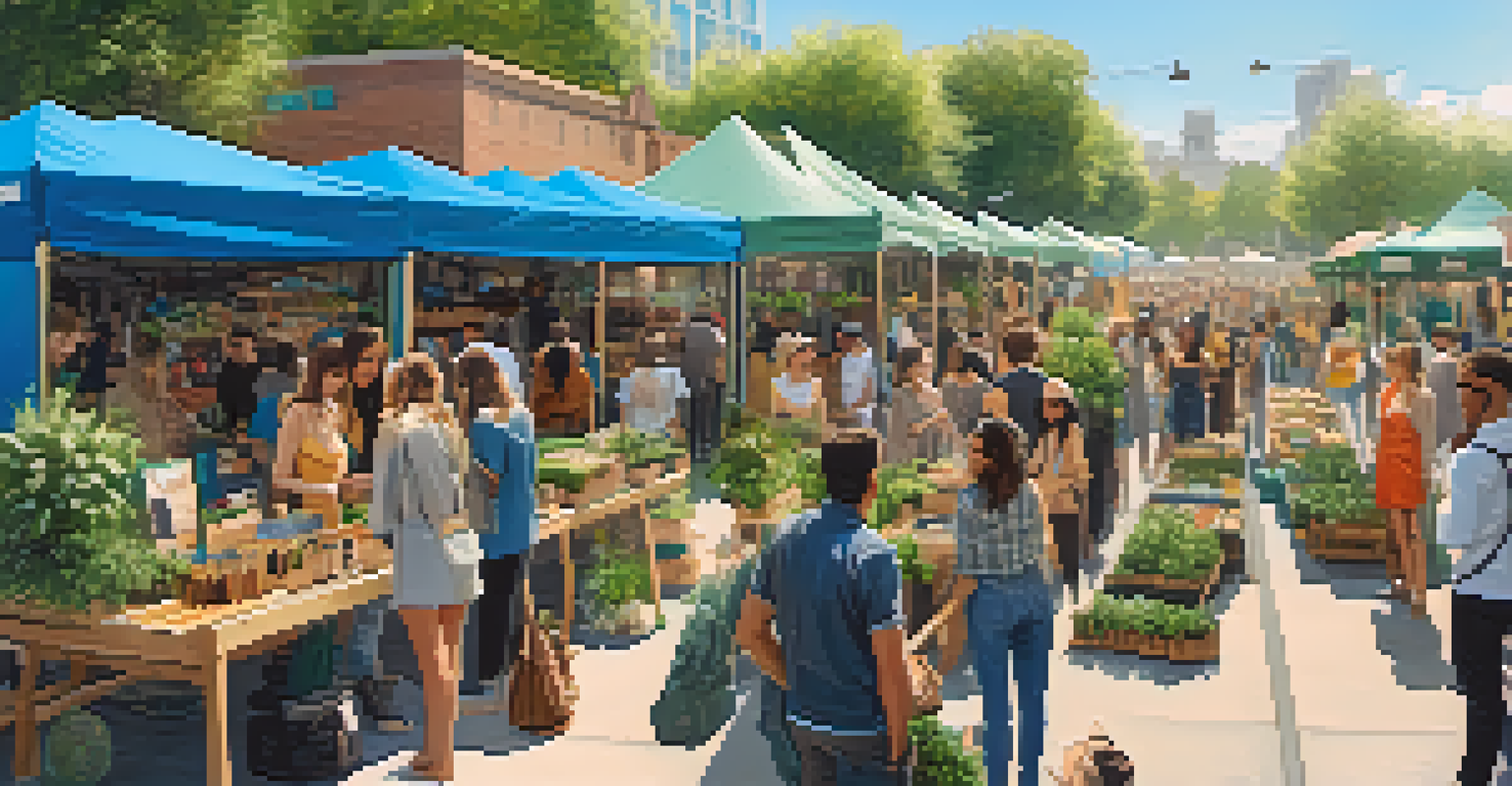The Future of Fashion: Gig Economy's Influence on Styles

Understanding the Gig Economy's Impact on Fashion
The gig economy encompasses a range of jobs characterized by short-term engagements, often facilitated by digital platforms. This shift in how people work influences not just how they earn, but also what they wear. With freelancers and remote workers becoming the norm, there's a growing demand for versatile, comfortable clothing that can transition from work to leisure seamlessly.
Fashion is the armor to survive the reality of everyday life.
Fashion is no longer just about high-end designer labels; it's about practicality and adaptability. Gig workers often need outfits that are as dynamic as their schedules, leading brands to innovate in style and function. As a result, we see an increase in athleisure and smart-casual attire that caters to this mobile lifestyle.
Moreover, the gig economy's influence is evident in the rise of sustainable fashion choices, as many workers prioritize ethical consumption. This shift encourages brands to adopt eco-friendly practices and materials, reshaping the industry's approach to style in a more conscious and responsible manner.
The Rise of Personal Branding in Fashion Choices
In a gig economy where personal branding is crucial, individuals use fashion as a tool to express their unique identities. Freelancers and gig workers often curate their wardrobes to align with their personal brand, creating a visual narrative that resonates with their audience. This trend has paved the way for more eclectic and individualized styles, moving away from cookie-cutter looks.

Social media platforms play a significant role in this personal branding. Influencers and content creators showcase their fashion choices online, often setting trends that reflect the gig economy's diverse nature. As these styles gain popularity, traditional fashion cycles are disrupted, leading to a more fluid understanding of what is 'in' or 'out.'
Gig Economy Shapes Fashion Choices
The gig economy drives demand for versatile, comfortable clothing that seamlessly transitions from work to leisure.
As people navigate their careers through various gigs, their fashion choices become an extension of their professional personas. This shift not only empowers individuals to take control of their style but also encourages brands to cater to a broader spectrum of aesthetics and preferences.
Technology's Role in Shaping Fashion Trends
Technology has become a driving force in the fashion industry, particularly for gig workers who rely on online platforms for their careers. The rise of e-commerce and digital marketplaces has made it easier for individuals to access a wide variety of styles that suit their needs. This accessibility allows for quicker adoption of trends and styles that align with the fast-paced gig economy.
Sustainability is not a trend; it is the future of fashion.
Moreover, advancements in technology have led to the growth of virtual fitting rooms and augmented reality apps, enhancing the online shopping experience. This not only reduces the hassle of returns but also encourages consumers to experiment with new styles without the risk. As more gig workers shop online, brands are compelled to create innovative solutions that cater to their customers' evolving demands.
Social media algorithms also play a crucial role in how fashion trends emerge and spread. As gig workers share their styles online, algorithms push these trends to a broader audience, creating viral sensations that challenge traditional fashion cycles. This democratization of fashion allows for a more diverse range of styles to gain visibility and popularity.
Sustainability Trends Influenced by Gig Workers
The gig economy has fostered a growing awareness of sustainability in fashion. Many gig workers, particularly younger generations, prioritize eco-friendly brands that align with their values. This shift has pushed fashion companies to adopt sustainable practices and materials, responding to a demand for more responsible consumption.
As consumers become more conscious of the environmental impact of their clothing choices, they seek out brands that promote transparency and ethical production. This trend has led to a surge in second-hand shopping and clothing swaps, reflecting a desire to reduce waste and prolong the lifecycle of garments. Gig workers often spearhead these movements, showcasing their unique styles while promoting sustainability.
Sustainability Gains Importance
Gig workers prioritize eco-friendly brands, pushing the fashion industry towards more sustainable practices.
Additionally, collaborations between brands and eco-conscious influencers in the gig economy are becoming more common. These partnerships highlight the importance of sustainability in fashion, encouraging consumers to make informed choices while still expressing their individuality through style.
The Shift Toward Gender-Neutral Fashion Styles
The gig economy has contributed to the rise of gender-neutral fashion, as more individuals seek styles that transcend traditional gender norms. This shift reflects a broader societal movement toward inclusivity and self-expression. As gig workers embrace diverse identities, fashion brands are adapting by creating collections that cater to all genders.
Many contemporary designers are challenging conventional notions of masculinity and femininity, offering versatile pieces that can be worn by anyone. This open-minded approach to fashion encourages individuals to explore their personal style without the constraints of gendered expectations. It's a refreshing change that promotes freedom and creativity in how we dress.
As this trend continues to gain momentum, we will likely see an increase in brands dedicated to producing gender-neutral clothing lines. The gig economy's influence on fashion is pushing the industry to reflect the diverse identities and lifestyles of its consumers, paving the way for a more inclusive future.
The Role of Influencers in the Gig Economy
Influencers have become pivotal in shaping fashion trends within the gig economy. Many of these individuals build their careers around showcasing their unique styles, often leading to collaborations with brands seeking to tap into their audience. As a result, fashion choices are more accessible and relatable, moving away from the traditional runway model.
These influencers provide a fresh perspective on fashion, often breaking down barriers between high fashion and everyday wear. They encourage their followers to embrace individuality and express themselves through their clothing, leading to a more diverse array of styles gaining popularity. This democratization of fashion allows for a more inclusive and vibrant industry.
Influencers Redefine Fashion Trends
Influencers play a crucial role in shaping fashion trends, making styles more accessible and relatable to everyday consumers.
Moreover, the rise of micro-influencers—individuals with smaller but highly engaged followings—has further diversified the fashion conversation. They often reflect the realities of gig workers, showcasing styles that are practical yet trendy. This shift emphasizes authenticity, encouraging brands to connect with consumers on a deeper level.
Looking Ahead: The Future of Fashion in the Gig Economy
As we look toward the future, it's clear that the gig economy will continue to reshape the fashion landscape. Trends will likely evolve to reflect the needs of a workforce that values flexibility and individuality. We can expect more brands to prioritize comfort, versatility, and sustainability as they respond to the changing demands of consumers.
Additionally, technology will play an even greater role in how we shop and consume fashion. The integration of AI and data analytics will help brands better understand consumer preferences, leading to personalized shopping experiences that cater to individual styles. This shift will further empower gig workers to express themselves through fashion that aligns with their lifestyles.

Ultimately, the future of fashion in the gig economy is bright and diverse. As consumers continue to push for inclusivity, sustainability, and authenticity, the industry will adapt, creating a vibrant tapestry of styles that truly reflect the spirit of the times.